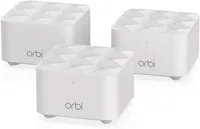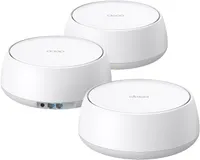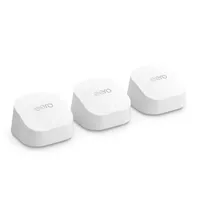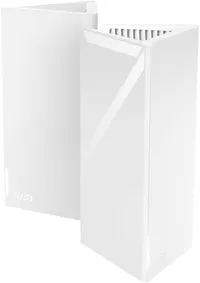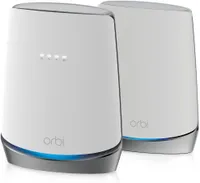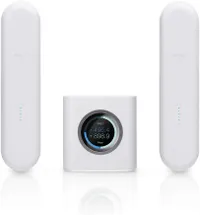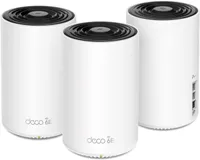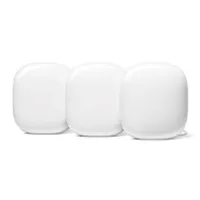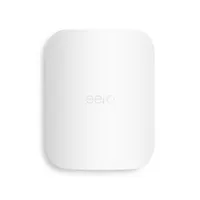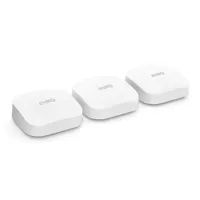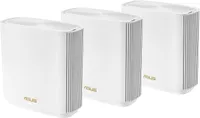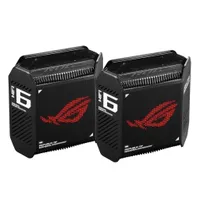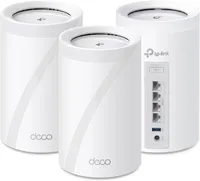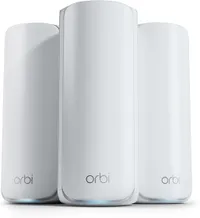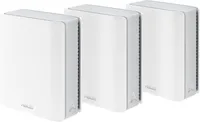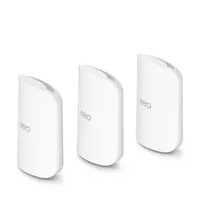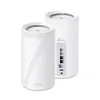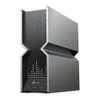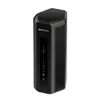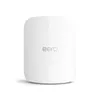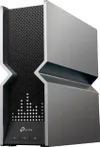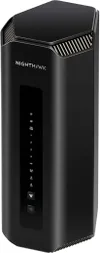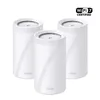19 mesh Wi-Fi system deals I’d grab before Prime Day ends tonight
Say goodbye to Wi-Fi dead zones for good with these last-minute mesh router deals
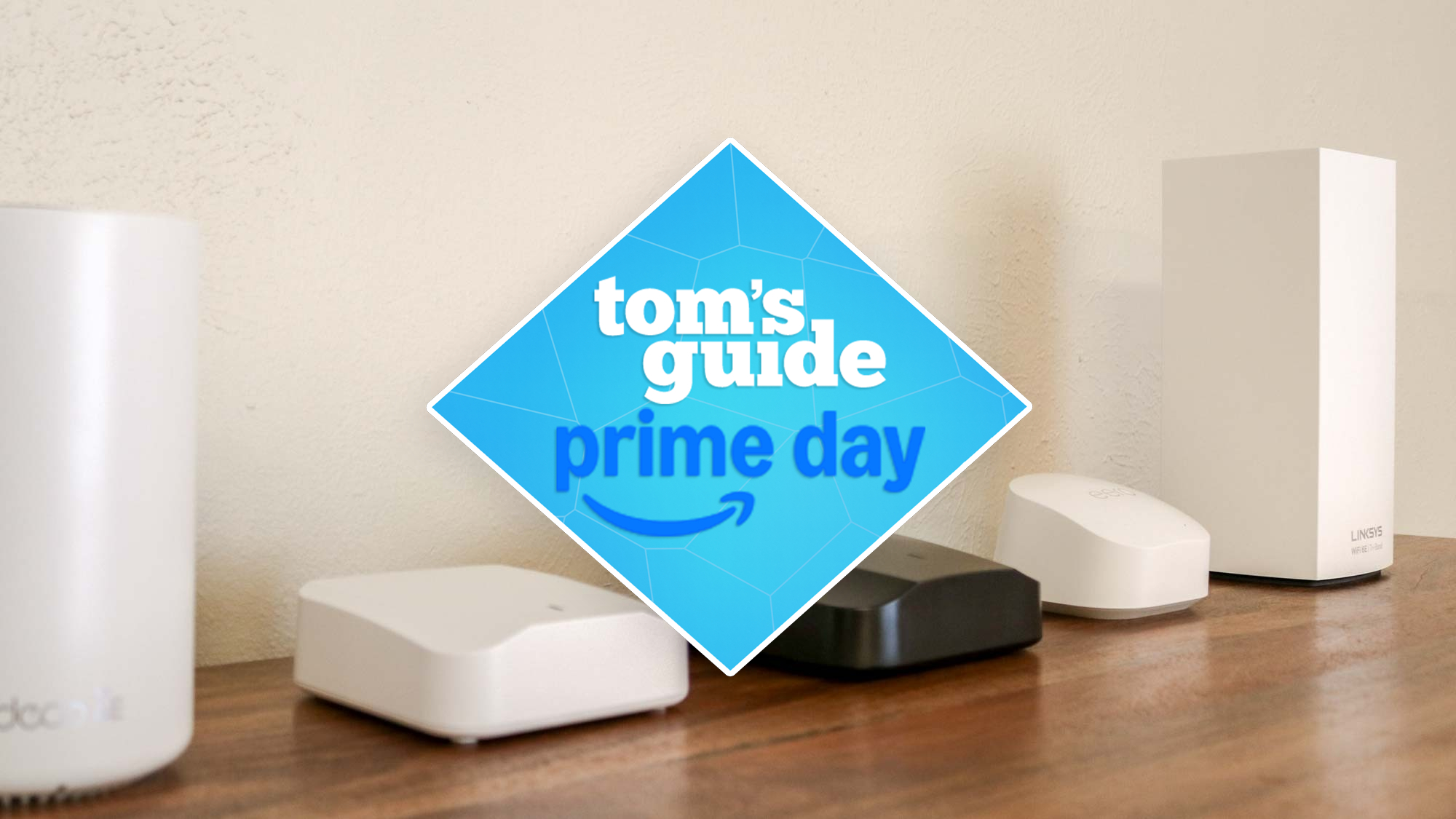
If you’re tired of Wi-Fi dead zones as you move throughout your home, one of the best mesh Wi-Fi systems is exactly what you’re looking for—and since the Amazon Prime Day sale ends tonight, now's the time to jump on these deals!
For instance, you can save $500 off the eero Max 7 or $150 off the TP-Link Deco BE63 and both of these mesh Wi-Fi systems come in a three-pack to ensure you’ll have whole-home connectivity in even the largest houses. Likewise, by purchasing your own router, you won’t have to pay monthly equipment rental fees to your Internet Service Provider, especially when you pair any of these mesh kits with one of the best cable modems.
These are just the best deals I’ve seen so far and as Amazon's biggest sales event of the year is winding down, I don't think we'll see any more but I'll keep checking till the very end. For now, here are the best Prime Day-worthy deals on mesh Wi-Fi systems and mesh routers that you won’t want to miss.
Quick links
- Netgear Orbi RBK13 (three-pack): was $199 now $173 @ Amazon
- TP-Link Deco BE23 (three-pack): was $249 now $179 @ Amazon
- Amazon eero 6+ (three-pack): was $299 now $195 @ Amazon
- MSI Roamii BE Lite (two-pack): was $299 now $201 @ Amazon
- Netgear Orbi CBK752 (two-pack): was $299 now $225 @ Amazon
- AmpliFi HD Wi-Fi System (three-pack): was $399 now $243 @ Amazon
- TP-Link Deco XE75 Pro (three-pack): was $399 now $249 @ Amazon
- Google Nest WiFi Pro (three-pack): was $399 now $289 @ Amazon
- Amazon eero Outdoor 7 (one-pack): was $399 now $319 @ Amazon
- Amazon eero Pro 6E (three-pack): was $549 now $349 @ Amazon
- Asus ZenWiFi ET8 (three-pack): was $479 now $402 @ Amazon
- Asus ROG Rapture GT (two-pack): was $479 now $414 @ Amazon
- TP-Link Deco BE63 (three-pack): was $599 now $449 @ Amazon
- Netgear Orbi 770 (three-pack): was $899 now $736 @ Amazon
- Asus ZenWiFi BT8 (three-pack): was $849 now $799 @ Amazon
- Amazon eero Max 7 (three-pack): was $1,699 now $1,189 @ Amazon
- Netgear Orbi 970 (three-pack) was $1,999 now $1,684 @ Amazon
Mesh Wi-Fi deals
Read moreRead less▼
While Netgear’s other Orbi mesh devices are larger and somewhat bulky, this cube-shaped three-pack will be a lot easier to add to any home. The main unit which serves as the router has one free gigabit Ethernet port while the two satellites don’t have any additional ports. It’s worth noting though that this is a Wi-Fi 5-powered mesh kit that certainly won’t be ideal for power users.
Read moreRead less▼
If a small and unobtrusive mesh Wi-Fi system is what you’re after, then this dual-band Wi-Fi 7 mesh kit might be just what you need. The TP-Link Deco BE23 comes with almost all of Wi-Fi 7’s best features like Multi-Link Operation but you don’t get access to the faster 6 GHz band. Still, the BE23 has two 2.5 Gbps Ethernet ports around back and supports over 150 connected devices while covering up to 6,500 square feet with a strong Wi-Fi signal.
Read moreRead less▼
For those who want a small and compact mesh Wi-Fi system that’s easy to set up and use, it doesn’t get any better than the eero 6+. These Wi-Fi 6-powered devices are absolutely tiny compared to other mesh routers but still pack in two gigabit Ethernet ports. Eero’s mesh routers also include other useful features. For instance, you can use an Echo dot as a mesh extender for free to extend your home network's range even further.
Read moreRead less▼
Upgrading to a Wi-Fi 7-powered mesh router doesn’t have to cost a fortune, especially with this deal. The mesh Wi-Fi system comes in a two-pack and covers up to 5,800 square feet with support for over 120 connected devices. As we noted in our MSI Roamii BE Lite review, this deal gets you some of Wi-Fi 7’s best features in a more affordable package with a 2.5 Gbps input port and built-in security software for free. Just keep in mind this is a dual-band Wi-Fi 7 mesh kit and not a tri-band one, so you won’t get access to the faster 6GHz band.
Read moreRead less▼
Not everyone wants a complicated home networking setup with a separate cable modem and mesh router and this is where a combo like this one can help. The Netgear Orbi Modem Router Combo features a DOCSIS 3.1 cable modem and a two-piece, Wi-Fi 6-powered mesh Wi-Fi system. It can cover up to 5,000 square feet with a strong wireless signal and supports more than 40 connected devices.
Read moreRead less▼
The original Amplifi Alien mesh kit was one of the most interesting mesh routers we reviewed at the time and now Ubiquiti Labs is back with another less conventional mesh Wi-Fi system. While the small, cube-shaped unit serves as your main router with four gigabit Ethernet ports, you also get two long satellites that plug directly into an AC outlet. Though it looks cool, this is a Wi-Fi 5-powered mesh kit after all. However, if you like the look of the circular screen on the main router, I wouldn’t blame you but just don’t expect a speed demon.
Read moreRead less▼
Before upgrading to Wi-Fi 7, I used this Wi-Fi 6E-powered mesh system for years without any issues. The TP-Link Deco XE75 Pro can cover up to 7,200 square feet in a three-pack and supports up to 200 connected devices. You can use any of the three units as your main router too. When we reviewed the standard TP-Link Deco XE75 we praised its value for money but with this deal, you’re getting the more powerful version that comes with a 2.5 Gbps (instead of a gigabit) input port which is ideal for multi-gig internet plans.
Read moreRead less▼
Tired of boring white or black routers? The Google Nest WiFi Pro is a Wi-Fi 6E-powered mesh Wi-Fi system with a stylish design. Besides your standard white, this mesh router also comes in yellow, teal and light pink to add a pop of color to your home networking setup. Each Nest WiFi Pro device has a range of 2,200 square feet, two gigabit Ethernet ports and you can control your whole network right from the Google Home app.
Read moreRead less▼
If you’re thinking of buying an eero mesh kit or you already have one, then the eero Outdoor 7 could be a perfect upgrade, especially if you have Wi-Fi dead zones in your garage or backyard. This mesh Wi-Fi extender lets you bring your home network outside and it can be powered over Ethernet or with a standard AC plug. In our eero Outdoor 7 review, we were very impressed by how it fared against the elements outside. In fact, I have one in my own backyard and I haven’t had any issues yet after 6 months.
Read moreRead less▼
If small and discrete is what you’re after, look no further than Amazon’s puck-shaped eero Pro 6E mesh kit. This Wi-Fi 6E-powered mesh Wi-Fi system covers up to 6,000 square feet and supports more than 100 connected devices at the same time. In our eero Pro 6E review, we loved how easy this mesh router is to set up and we really appreciated the fact that it has a smart home hub built-in.
Read moreRead less▼
Tired of paying for extra security software? Well with this and other mesh Wi-Fi systems from Asus, you don’t have to. This Wi-Fi 6E-powered mesh kit comes with Asus’ AiProtection Pro, can cover up 7,500 square feet and there are plenty of ports around back for those with a lot of wired devices. In our Asus ZenWiFi ET8 review, we praised its rich feature set and more affordable price which is even lower than when we first looked at it thanks to this deal.
Read moreRead less▼
Who says gamers can’t benefit from whole-home connectivity? This Wi-Fi 6-powered mesh kit has long been one of the best gaming routers in our opinion and it can cover up to 5,800 square feet while packing in some very useful gaming features. In our Asus ROG Rapture GT6 review, we were really impressed with this mesh router’s design and its built-in RGB lighting. Even with its flashy looks though, it delivers great performance and packs in plenty of ports for all your wired devices.
Read moreRead less▼
For those that want the benefits of a mesh network and the power of Wi-Fi 7, this mesh kit from TP-Link certainly delivers. It can cover up to 7,600 square feet while supporting over 200 connected devices with a 2.5 Gbps input port and even USB ports on the back of each unit. In our TP-Link Deco BE63 review, we loved how the company managed to incorporate some of the best features of its more expensive Deco BE85 mesh kit in a much more affordable package.
Read moreRead less▼
For those with a large home who want excellent performance, this mesh router certainly delivers. The Netgear Orbi 770 is a Wi-Fi 7-powered mesh kit that can cover up to 8,000 square feet with support for more than 100 devices. It’s packed with multi-gig ports too and you get four 2.5Gbps ones on the main unit. In our Netgear Orbi 770 review, we were very impressed with its performance, particularly at mid-range distances where other mesh Wi-Fi systems tend to fall short.
Read moreRead less▼
If you like what Asus is doing with the ET8 but want the power of Wi-Fi 7, this is the mesh kit for you. This Wi-Fi 7-powered mesh system covers up to 8,850 square feet, comes with multiple 2.5 Gbps ports and you also get Asus’ built-in AiProtection Pro security software for free. One neat thing with this mesh router is that you can connect your phone to its USB port in hotspot mode to keep all your devices connected in the event of an internet outage.
Read moreRead less▼
Not only is this mesh Wi-Fi system blazing fast but it’s also incredibly simple to set up. The eero Max 7 is a Wi-Fi 7-powered mesh kit that can cover up 7,500 square feet and supports up to a whopping 750+ connected devices. It also works as a smart home hub with Thread, Matter and Zigbee support built-in. In our eero Max 7 review, we called it the simplest Wi-Fi 7 mesh system to set up and for good reason thanks to eero’s excellent yet intuitive app.
Read moreRead less▼
For those with very large homes that want the best of the best when it comes to mesh networking, Netgear’s Orbi 970 is the ultimate upgrade. This Wi-Fi 7-powered mesh kit can cover up to 10,000 square feet while supporting 200 connected devices. The Orbi 970 also packs in plenty of ports including two 10 Gbps ones and four 2.5 Gbps ports which makes it ideal for high-speed multi-gig internet.
What you need to know before buying a mesh router?
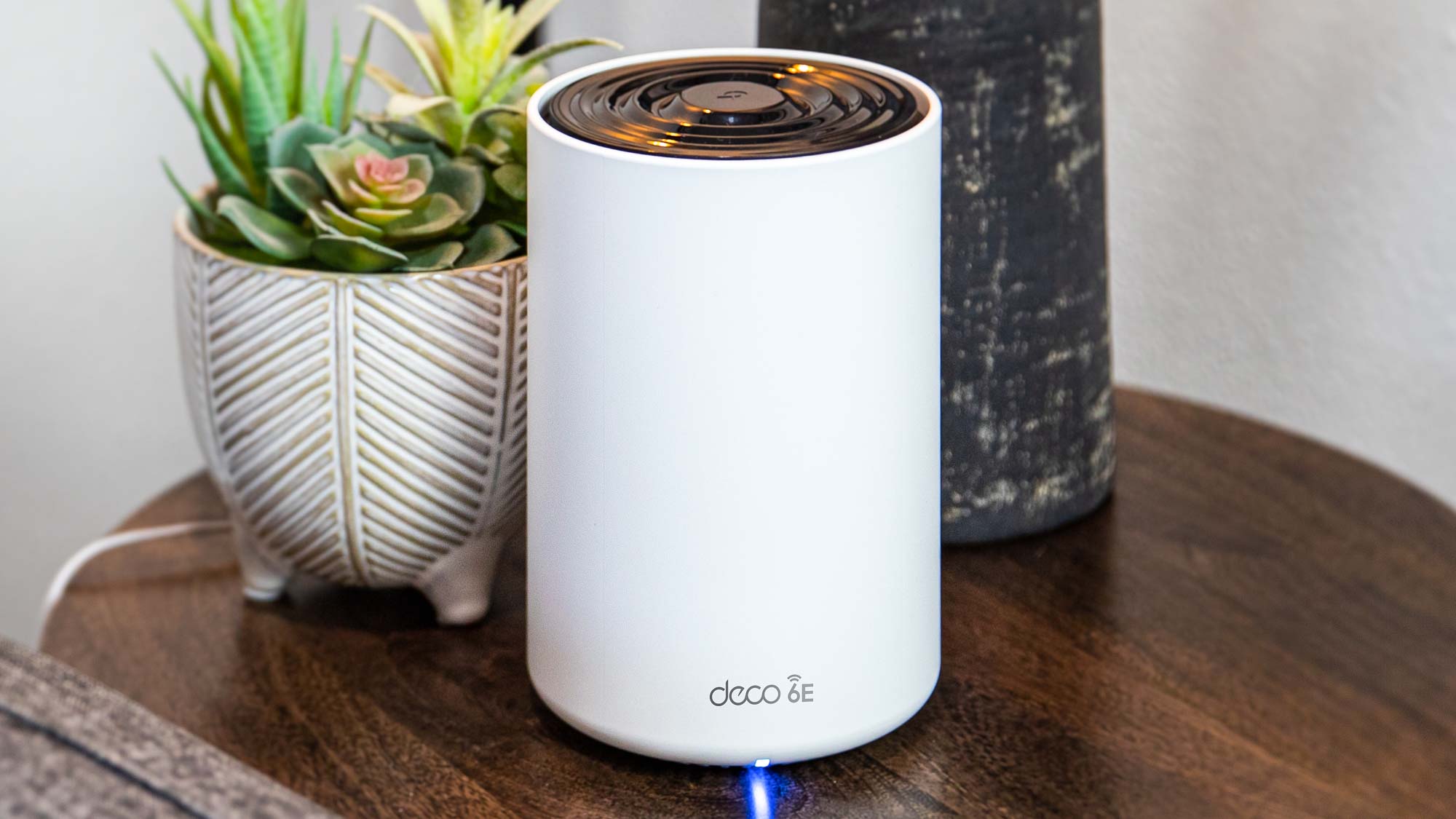
Unlike one of the best Wi-Fi routers, mesh routers or a mesh Wi-Fi system as they’re also referred to are comprised of multiple devices you place throughout your home. This way, even as you move from room to room, your smartphone, tablet or laptop doesn’t disconnect. Instead, your internet connection starts at the main unit which serves as your router and then gets handed off to the satellites you have set up in other rooms.
If you live in a small home or apartment, a two-pack might be all you need. However, if you live in a larger home or one with a unique layout, then a three-pack might be the better choice. It’s worth noting that you can always buy another satellite later on if you find that your current setup doesn’t offer the coverage you need. So if you get a two-pack now and still have some Wi-Fi dead zones, you can just add another satellite later for additional coverage.
One big difference between traditional routers and mesh routers involves the number of free Ethernet ports you have around back. Most traditional routers have four Ethernet ports while some mesh ones might only have two. Depending on the number of wired devices you plan on connecting, you might want to consider a mesh Wi-Fi system with more ports. However, you can always buy a network switch to easily add more ports to your mesh router.
The other thing you want to take into account is which Wi-Fi standard will best suit your needs. Wi-Fi 6 devices are typically less expensive but you don’t get access to the faster 6GHz band, just the standard 2.4 and 5GHz. Meanwhile, with Wi-Fi 6E and Wi-Fi 7 devices, these mesh kits will likely feature a tri-band design (2.4, 5 and 6GHz). However, be aware that some less expensive Wi-Fi 7 routers might only offer a dual-band (2.4 and 5GHz) design. So if you want access to the faster 6GHz band for the fastest downloads possible, pay close attention to the specifications.
For more on all things Wi-Fi, check out our guides on Wi-Fi 6 vs Wi-Fi 6E, Wi-Fi 6 vs Wi-Fi 7 and if you’re on the fence about upgrading to a mesh router, take a look at our roundup of the best Wi-Fi extenders as one of these devices might be able to solve your connectivity issues without the need to upgrade to a brand new router.
Get instant access to breaking news, the hottest reviews, great deals and helpful tips.

Anthony Spadafora is the managing editor for security and home office furniture at Tom’s Guide where he covers everything from data breaches to password managers and the best way to cover your whole home or business with Wi-Fi. He also reviews standing desks, office chairs and other home office accessories with a penchant for building desk setups. Before joining the team, Anthony wrote for ITProPortal while living in Korea and later for TechRadar Pro after moving back to the US. Based in Houston, Texas, when he’s not writing Anthony can be found tinkering with PCs and game consoles, managing cables and upgrading his smart home.
You must confirm your public display name before commenting
Please logout and then login again, you will then be prompted to enter your display name.
